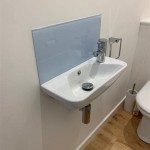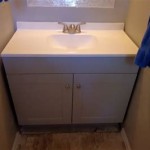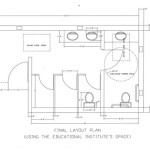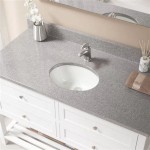How to Install a Tile Shelf in a Bathroom Shower
Adding a tile shelf to your bathroom shower can be a transformative project. It provides a convenient space for storing shampoo, conditioner, soap, and other shower necessities, enhancing both functionality and aesthetics. This article will guide you through the process of installing a tile shelf in your bathroom shower, ensuring a smooth and successful outcome.
1. Planning and Preparation
The first step in installing a tile shelf is planning and preparation. This involves determining the shelf's location, gathering necessary materials, and preparing the shower area for installation.
Here are some key considerations:
-
Location:
Choose a spot on your shower wall that is easily accessible and won't obstruct water flow. Avoid areas near showerheads or other plumbing fixtures. -
Size:
Determine the size of the shelf based on your storage needs and the available space on your shower wall. -
Materials:
You will need tile, mortar, grout, tile spacers, a level, tape measure, pencil, trowel, sponge, and safety equipment (gloves, goggles, and dust mask). -
Shower Preparation:
Clean the shower wall thoroughly, removing any debris, soap scum, or mildew.
2. Installing the Shelf
With the planning and preparation completed, you can begin installing the tile shelf. Here's a step-by-step process:
-
Mark the Shelf Location:
Using a tape measure, mark the desired location of the shelf on the shower wall. Ensure the shelf is level using a level. -
Apply Mortar:
Use a trowel to apply a thin layer of mortar onto the marked area. The thickness of the mortar layer should be slightly thicker than the tile's thickness. -
Position the Tiles:
Carefully position the tiles on the mortar bed, ensuring they are level and flush with the surrounding tiles. Use spacers to maintain even gaps between the tiles. -
Press the Tiles:
Press firmly on the tiles to ensure good adhesion to the mortar. Remove any excess mortar with a damp sponge. -
Allow Mortar to Cure:
Allow the mortar to cure completely according to the manufacturer's instructions. This typically takes 24-48 hours.
3. Grouting and Cleaning
Once the mortar has cured, the next step is to grout the tile shelf. Grout fills the gaps between the tiles, providing a smooth and sealed finish. Here's how to grout:
-
Apply Grout:
Use a rubber trowel to apply grout to the gaps between the tiles. Ensure the grout is evenly distributed and fills the gaps completely. -
Wipe Excess Grout:
After applying the grout, use a damp sponge to wipe away any excess grout. Ensure the grout lines are clean and smooth. -
Allow Grout to Cure:
Allow the grout to cure completely according to the manufacturer's instructions. This typically takes 24-48 hours.
Once the grout has cured, the tile shelf is ready for use. You can now place your shower necessities on the shelf and enjoy the added convenience and aesthetic appeal.
Installing a tile shelf requires a combination of planning, preparation, and care. By following these steps, you can successfully install a tile shelf in your bathroom shower, enhancing its functionality and aesthetics. However, if you are unsure about any part of the process, it is always best to consult a professional.

How To Install A Corner Shower Shelf Diy

How To Install A Floating Shelf On Tile Wall Without Using Hardware Brepurposed

10 Nifty Ways To Fit A Shelf In Your Shower

Don T Glue Install An Easy In Wall Shower Shelf Instead Goshelf

Niches Ledges And Floating Shelves Let S Talk Shower Storage

How To Build A Custom Tile Shower Niche Four Generations One Roof

How To Install A Floating Shelf On Tile Wall Without Using Hardware Brepurposed

Diy Shower Tiling Installing Floating Corner Shelves
Get Inspired By Bathroom Shower Corner Shelves From Goshelf

10 Nifty Ways To Fit A Shelf In Your Shower
Related Posts







